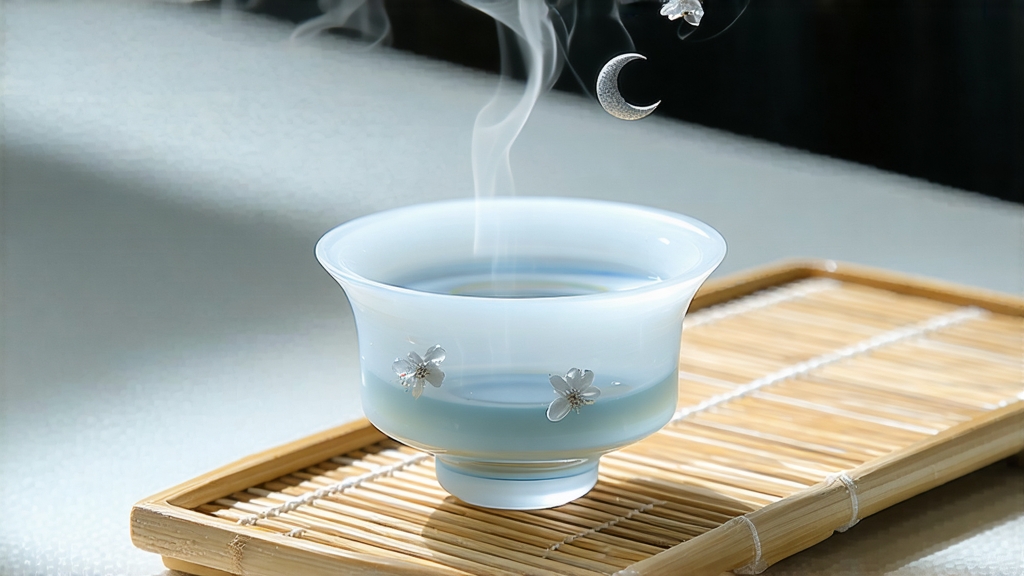
Among the six great families of Chinese tea, white tea is the one that asks the least yet gives the most. It is the minimalist ink-wash painting of the leaf world, and within that restrained palette Bai Hao Yin Zhen—“Silver Needle”—is the single purest stroke. Made from nothing but unopened buds, it is tea stripped to its luminous essence: no rolling, no roasting, no twisting, no shouting. What remains is the hush of a spring night preserved in down-covered ivory, a sip that tastes like moonlight on new snow.
-
A bud named history
White tea’s written record begins in the Song dynasty (960-1279), when the imperial court demanded “white” tribute teas whose buds were so young they still wore their silvery pellicle. But the cultivar and craft that we now call Bai Hao Yin Zhen coalesced during the late Qing in the coastal county of Fuding, Fujian. Legend says a tea grower named Wei Ji, anxious to spare his finest buds from the turmoil of foreign markets, spread them on a bamboo mat in an unused incense room. For three languid days the buds withered in cool, scented darkness; when infused they released a nectar so delicate it felt like drinking chilled starlight. Whether myth or memory, the technique—pick, wither, dry—has changed so little that a Song dynasty tea master could walk into a modern Fuding workshop and recognize every gesture. -
The geography of serenity
Fuding hugs the northeastern horn of Fujian, where the warm South China Sea collides with the moist air of the Wuyi Mountains. The result is a maritime monsoon climate: 200 foggy days a year, mean temperatures that never quite decide between sweater and T-shirt, and acidic red laterite soil shot through with quartz. Two cultivars dominate: Fuding Da Bai (“Big White”) and the even more bud-prolific Fuding Da Hao (“Big Down”). Under these conditions the bushes develop extraordinarily fat buds, sometimes exceeding 3 cm, each sheathed in a duvet of protective hairs that shimmer like frost. Those hairs—rich in amino acids and volatile terpenes—are the source of Silver Needle’s signature “downy fragrance” (haoxiang), a scent somewhere between ripe melon and fresh alfalfa. -
The craft of doing almost nothing
Picking begins when the spring thermometer hovers between 15 °C and 20 °C, usually from mid-March to early April. Only buds plucked before noon are retained; any leaf that has begun to unfurl is rejected. Within minutes of plucking the buds are spread on water-willow racks in a sun-dappled courtyard for a brief “sun wither” (shai qing) that lasts no more than thirty minutes. The goal is not to desiccate but to coax the bud out of its daytime dormancy, softening cell walls so that internal enzymes can begin their quiet choreography.
Next comes the true soul of white-tea making: the indoor wither (lian yin). Buds are laid 2–3 cm deep on bamboo trays stacked like bunk beds in a ventilated loft. For 36–48 hours the tea master is more meteorologist than artisan, monitoring humidity, adjusting louvers, shifting trays to cooler corners. Enzymatic oxidation proceeds at a glacial pace, turning catechins into delicate theaflavins, transforming grassy aldehydes into honeyed ketones. When the bud’s moisture drops to 8–10 %, a final gentle bake at 40 °C locks in the aromatics without adding roast notes. The entire process is a study in restraint: no pan-fire, no kneading, no shaking—just time, air, and the grower’s patient gaze.
- Grades and guises
Purists recognize only one authentic Silver Needle: buds plucked from Fuding Da Bai bushes in the first flush. Yet commerce has spawned cousins. Cai Hao Yin Zhen (“Colored Down Silver Needle”) blends in slightly older buds tinged jade-green. Yunnan Moonlight White uses Yunnan large-leaf buds, yielding a darker liquor and muscatel sweetness. Even within Fuding, micro-elevation matters. Buds from the high village of Guan Yang, cooled by 600 m altitude fogs, develop a cooler, cucumber-lily profile